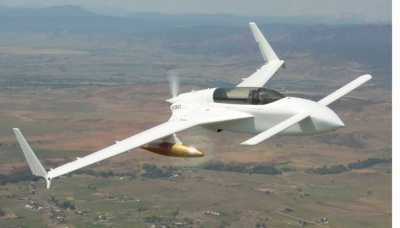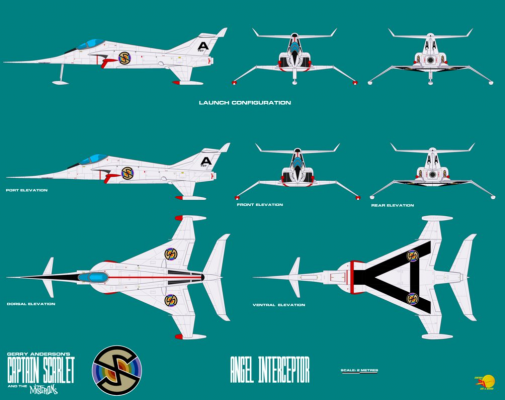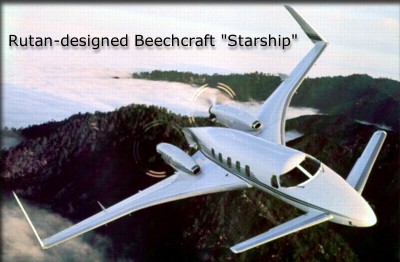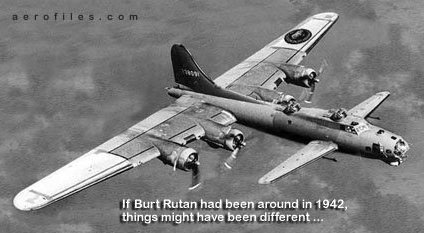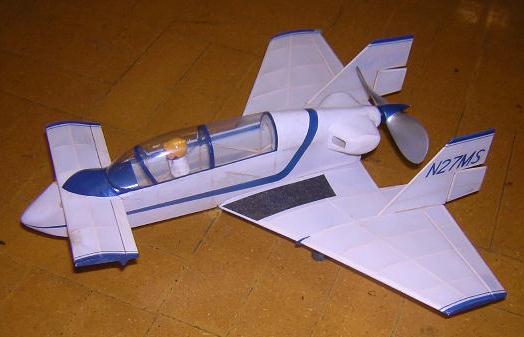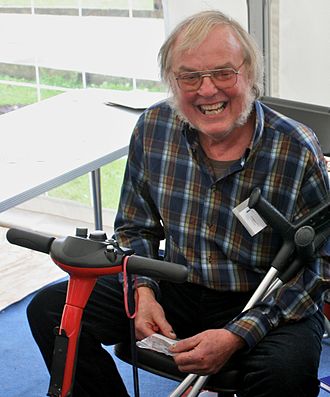Printed P-38
Posted by elwood127
|
Printed P-38 December 30, 2016 12:29AM |
Registered: 9 years ago Posts: 705 |
Hey all, just watched this video of an $18.00 STL file for a P-38 Lightning. Beautiful clear plastic and flies great. Looks like a large bed and or Z height is needed. Check it out.
[www.youtube.com]
[www.youtube.com]
|
Re: Printed P-38 December 30, 2016 11:47AM |
Registered: 9 years ago Posts: 1,873 |
|
Re: Printed P-38 December 30, 2016 12:45PM |
Registered: 8 years ago Posts: 312 |
I bought the Spitfire.
It will fit a Prusa i3 print bed. It comes with prebuilt S3D Factory files etc etc. Really complete.
It is a fun project and my Spitfire has a wingspan of 90 cm or so, so it is big too. Love doing this.
Still not sure if I am going to make it fly or just use it as a static model, but it really looks good either way.
Lykle
It will fit a Prusa i3 print bed. It comes with prebuilt S3D Factory files etc etc. Really complete.
It is a fun project and my Spitfire has a wingspan of 90 cm or so, so it is big too. Love doing this.
Still not sure if I am going to make it fly or just use it as a static model, but it really looks good either way.
Lykle
|
Re: Printed P-38 December 30, 2016 10:06PM |
Registered: 8 years ago Posts: 1,671 |
|
Re: Printed P-38 December 31, 2016 06:42PM |
Registered: 7 years ago Posts: 321 |
Could be wrong, this is just my opinion, but... I don't think it will scale down very well.
The design uses a lot of lightweight materials, very light engine - it was built around the size it is.
Doing it in plastic, much smaller scale... would need quite a powerful engine. Would be proportionally much heavier than the original.
Burt Rutan does break the rule book an awful lot. Very hard to copy his designs without messing them up badly.
Edited 1 time(s). Last edit at 12/31/2016 06:43PM by DragonFire.
|
Re: Printed P-38 December 31, 2016 06:49PM |
Registered: 8 years ago Posts: 1,671 |
|
Re: Printed P-38 December 31, 2016 07:00PM |
Registered: 7 years ago Posts: 321 |
Cor blimey guv, now you've put me on a spot...
... er... somehow, you've got to get proportionally more thrust out of the engine.
I guess logically, don't use a prop. Use a jet. That might make it fly.
Not at all helpful to you, probably, but that's what the issue comes down to - you will need more thrust.
... er... somehow, you've got to get proportionally more thrust out of the engine.
I guess logically, don't use a prop. Use a jet. That might make it fly.
Not at all helpful to you, probably, but that's what the issue comes down to - you will need more thrust.
|
Re: Printed P-38 December 31, 2016 09:01PM |
Registered: 8 years ago Posts: 1,671 |
|
Re: Printed P-38 January 01, 2017 08:14AM |
Registered: 7 years ago Posts: 15 |
|
Re: Printed P-38 January 01, 2017 09:23AM |
Registered: 9 years ago Posts: 1,873 |
Quote
tody79
The canard layout with a pusher has some advantages and disadvantages. It will work as good as a conventional layout when build as a model aircraft. A turbine is not beneficial unless you fly fast. At low speed, the prop is more efficient.
It would be a nice model aircraft.
It sure would be an interesting model, I'd love to see that. I wonder if there are drawings available to work from. The interesting thing to my eye is that there isn't much fuselage behind the wing, so getting the C of G in the right place looks challenging. We have the motor out back, but unless the scale is pretty big the battery pack might be a problem. I wonder how much lift the canards generate.
|
Re: Printed P-38 January 01, 2017 10:01AM |
Registered: 7 years ago Posts: 321 |
|
Re: Printed P-38 January 01, 2017 10:46AM |
Registered: 7 years ago Posts: 15 |
This is a conventional canard layout. The canards will not significantly add lift. I think that the cog is in the rear. The lift is generated by the main wing, as usual. The canards just equalize the momentum. The motor could be in the rear with the battery in front. Cooling could be challenging.
It looks cool however
It looks cool however

|
Re: Printed P-38 January 01, 2017 11:12AM |
Registered: 9 years ago Posts: 1,873 |
If the canards are non-lifting then the CofG will have to be over the center of pressure of the wing (typically around 1/4 to 1/3 of the chord from the leading edge), so we'd have to push all the weight towards the rear half of the fuselage. Ugh, I really must learn to walk before I run, but this just looks so interesting 

|
Re: Printed P-38 January 01, 2017 12:15PM |
Registered: 7 years ago Posts: 15 |
|
Re: Printed P-38 January 01, 2017 12:17PM |
Registered: 7 years ago Posts: 15 |
|
Re: Printed P-38 January 02, 2017 04:24AM |
Registered: 9 years ago Posts: 978 |
Some of what's posted above is inaccurate, so, FWIW, here's some info (off-topic for the forum, on-topic for the thread) from a pilot and one-time aircraft kit builder, and long time ago model builder and flyer... hope it's of interest:
1. The canards do generate lift.... this makes the canard design a little more efficient that the conventionally designed tailplane, which actual "lifts" downwards. But the main function of the canard or tailplane is to aerodynamically balance the aircraft lengthwise.
2. The COG still needs to be about a 1/3 to 1/4 of the main wing. In pushers, this is done by putting the pilot and passenger forward of the leading edge. Something heavy like the battery will be right in the nose. Some require lead ballast.
3. Fuel tanks on aircraft tend to be in or near the leading edge to minimise COG changes as fuel burns.
4. The Vari-Ezes (as pictured) and such-like didn't have especially light engines... just normal aircraft engines.
5. In a model, I guess placing batteries and heavy stuff at the front (plus ballast if needed) would work... the important thing (I guess) would be to build the tail light.
6. Adding thrust isn't necessarily the answer. Although no pilot ever complained of having too much power.
7. There was a "Rocket Racing League" in the USA in 2010 or so, flying Velocity canards with rocket engines.
8. When scaling down an aircraft to a model, it's necessary to change the airfoil... aerodynamics does not scale well, and airspeeds tend to be lower.
9. There are canard aircraft which have tractor props [www.geeksville.com]
10. There's also the Eagle, which has a canard and a tailplane.
11. The *really* cool Rutan canard is the Berkut
12. Cooling a pusher is more challenging than a tractor, especially at low airspeeds.
1. The canards do generate lift.... this makes the canard design a little more efficient that the conventionally designed tailplane, which actual "lifts" downwards. But the main function of the canard or tailplane is to aerodynamically balance the aircraft lengthwise.
2. The COG still needs to be about a 1/3 to 1/4 of the main wing. In pushers, this is done by putting the pilot and passenger forward of the leading edge. Something heavy like the battery will be right in the nose. Some require lead ballast.
3. Fuel tanks on aircraft tend to be in or near the leading edge to minimise COG changes as fuel burns.
4. The Vari-Ezes (as pictured) and such-like didn't have especially light engines... just normal aircraft engines.
5. In a model, I guess placing batteries and heavy stuff at the front (plus ballast if needed) would work... the important thing (I guess) would be to build the tail light.
6. Adding thrust isn't necessarily the answer. Although no pilot ever complained of having too much power.
7. There was a "Rocket Racing League" in the USA in 2010 or so, flying Velocity canards with rocket engines.
8. When scaling down an aircraft to a model, it's necessary to change the airfoil... aerodynamics does not scale well, and airspeeds tend to be lower.
9. There are canard aircraft which have tractor props [www.geeksville.com]
10. There's also the Eagle, which has a canard and a tailplane.
11. The *really* cool Rutan canard is the Berkut
12. Cooling a pusher is more challenging than a tractor, especially at low airspeeds.
|
Re: Printed P-38 January 02, 2017 06:19AM |
Registered: 8 years ago Posts: 1,671 |
Yeah the Berkut is the sexiest, like an angel interceptor
well almost [www.nextcraft.com]
The Starships pretty cool too
Some Plans here [www.ez.org] build here [www.aryjglantz.com]
has to be a little easier with a 3D printer, print a cage/ribs & dope some material over it, new motors, new batteries, altered wing shape(larger) can almost alter the
thoughts on Canard model
"Recently Jim McCoy sent me some information confirming what I had already had figured out about a canard. Because there is no prop wash coming over the flight surfaces, a canard requires more air speed for the elevator to be effective. This must be the reason that rotation is difficult and why the loops are so strange. I can't decide if I should try different props or a bigger engine after the repair, but I have all winter to think about it.
... If you were wondering about the title of this little tale, the story goes that the first time someone saw a canard landing, it looked so strange that he yelled for every one to DUCK! It just so happened he was French (canard means duck in French). "
Burt Rutan and the Beagle guy look similar
Edited 2 time(s). Last edit at 01/02/2017 06:40AM by MechaBits.
well almost [www.nextcraft.com]
The Starships pretty cool too
Some Plans here [www.ez.org] build here [www.aryjglantz.com]
has to be a little easier with a 3D printer, print a cage/ribs & dope some material over it, new motors, new batteries, altered wing shape(larger) can almost alter the
thoughts on Canard model
"Recently Jim McCoy sent me some information confirming what I had already had figured out about a canard. Because there is no prop wash coming over the flight surfaces, a canard requires more air speed for the elevator to be effective. This must be the reason that rotation is difficult and why the loops are so strange. I can't decide if I should try different props or a bigger engine after the repair, but I have all winter to think about it.
... If you were wondering about the title of this little tale, the story goes that the first time someone saw a canard landing, it looked so strange that he yelled for every one to DUCK! It just so happened he was French (canard means duck in French). "
Burt Rutan and the Beagle guy look similar
Edited 2 time(s). Last edit at 01/02/2017 06:40AM by MechaBits.
|
Re: Printed P-38 January 02, 2017 07:29AM |
Registered: 9 years ago Posts: 1,873 |
Quote
frankvdh
Some of what's posted above is inaccurate, so, FWIW, here's some info (off-topic for the forum, on-topic for the thread) from a pilot and one-time aircraft kit builder, and long time ago model builder and flyer... hope it's of interest:
1. The canards do generate lift.... this makes the canard design a little more efficient that the conventionally designed tailplane, which actual "lifts" downwards. But the main function of the canard or tailplane is to aerodynamically balance the aircraft lengthwise.
2. The COG still needs to be about a 1/3 to 1/4 of the main wing. In pushers, this is done by putting the pilot and passenger forward of the leading edge. Something heavy like the battery will be right in the nose. Some require lead ballast.
3. Fuel tanks on aircraft tend to be in or near the leading edge to minimise COG changes as fuel burns.
4. The Vari-Ezes (as pictured) and such-like didn't have especially light engines... just normal aircraft engines.
5. In a model, I guess placing batteries and heavy stuff at the front (plus ballast if needed) would work... the important thing (I guess) would be to build the tail light.
6. Adding thrust isn't necessarily the answer. Although no pilot ever complained of having too much power.
7. There was a "Rocket Racing League" in the USA in 2010 or so, flying Velocity canards with rocket engines.
8. When scaling down an aircraft to a model, it's necessary to change the airfoil... aerodynamics does not scale well, and airspeeds tend to be lower.
9. There are canard aircraft which have tractor props [www.geeksville.com]
10. There's also the Eagle, which has a canard and a tailplane.
11. The *really* cool Rutan canard is the Berkut
12. Cooling a pusher is more challenging than a tractor, especially at low airspeeds.
Hi Frank, thanks for your thoughts - that's interesting. I'm surprised about the need to push weight forward - I thought the problem would be getting enough weight towards the rear, but perhaps the motors are much heavier (compared to batteries) than I realised. The Berkut video is great - it had never occurred to me how much the canard would get into the sight lines, but I guess if you are used to a big engine and prop out front, the canard probably doesn't seem like much of a problem (I'm a glider pilot so I'm used to wide open vistas in front of me!).
|
Re: Printed P-38 January 02, 2017 10:02AM |
Registered: 7 years ago Posts: 15 |
Hi Frank, thank you very much for the details.
"1. The canards do generate lift.... this makes the canard design a little more efficient that the conventionally designed tailplane, which actual "lifts" downwards. But the main function of the canard or tailplane is to aerodynamically balance the aircraft lengthwise."
Yes, they do, but the lift is small compared to the lift generated by the main wing, as it is only to maintain the aerodynamical balance - like you posted.
2. [...] Something heavy like the battery will be right in the nose. Some require lead ballast.
You are talking of the real one, right? The COG must be maintained. Depending on the structural layout of a RC-model, maybe no front-weight at all is needed. We do not have passengers and fuel. The fuselage of a rc would be more or less empty.
5. In a model, I guess placing batteries and heavy stuff at the front (plus ballast if needed) would work... the important thing (I guess) would be to build the tail light.
Depends on the layout. Too much weight in front is very bad for the flight-dynamics.
8. When scaling down an aircraft to a model, it's necessary to change the airfoil... aerodynamics does not scale well, and airspeeds tend to be lower.
That is true and could be a problem, because you maybe can't copy the airfoil profile from the original. The airfoil, however, must be chosen carefully, since the canard and main wing design have a linked influence on the flyability. For example, the canards should stall before the main wing does. Then, the aircraft can't stall because the angle of attack is limited by the early stall of the canard. However, the canards aerodynamics must not interfere with the main wing aerodynamic such, that the airflow of the canards deteriorate the airflow of the main wing.
Since it is a conventional layout, the yaw stability could be an issue. Also rotation of the airplane when flaps are used will be rather slow, since the momentum of the main wing is then increased, which needs to be equalized by the canard in addition to the rotation of the fuselage. This gets worse if the COG is more forward, e.g. the more weight you put in the front of the airplane - see (5).
"1. The canards do generate lift.... this makes the canard design a little more efficient that the conventionally designed tailplane, which actual "lifts" downwards. But the main function of the canard or tailplane is to aerodynamically balance the aircraft lengthwise."
Yes, they do, but the lift is small compared to the lift generated by the main wing, as it is only to maintain the aerodynamical balance - like you posted.
2. [...] Something heavy like the battery will be right in the nose. Some require lead ballast.
You are talking of the real one, right? The COG must be maintained. Depending on the structural layout of a RC-model, maybe no front-weight at all is needed. We do not have passengers and fuel. The fuselage of a rc would be more or less empty.
5. In a model, I guess placing batteries and heavy stuff at the front (plus ballast if needed) would work... the important thing (I guess) would be to build the tail light.
Depends on the layout. Too much weight in front is very bad for the flight-dynamics.
8. When scaling down an aircraft to a model, it's necessary to change the airfoil... aerodynamics does not scale well, and airspeeds tend to be lower.
That is true and could be a problem, because you maybe can't copy the airfoil profile from the original. The airfoil, however, must be chosen carefully, since the canard and main wing design have a linked influence on the flyability. For example, the canards should stall before the main wing does. Then, the aircraft can't stall because the angle of attack is limited by the early stall of the canard. However, the canards aerodynamics must not interfere with the main wing aerodynamic such, that the airflow of the canards deteriorate the airflow of the main wing.
Since it is a conventional layout, the yaw stability could be an issue. Also rotation of the airplane when flaps are used will be rather slow, since the momentum of the main wing is then increased, which needs to be equalized by the canard in addition to the rotation of the fuselage. This gets worse if the COG is more forward, e.g. the more weight you put in the front of the airplane - see (5).
Sorry, only registered users may post in this forum.
